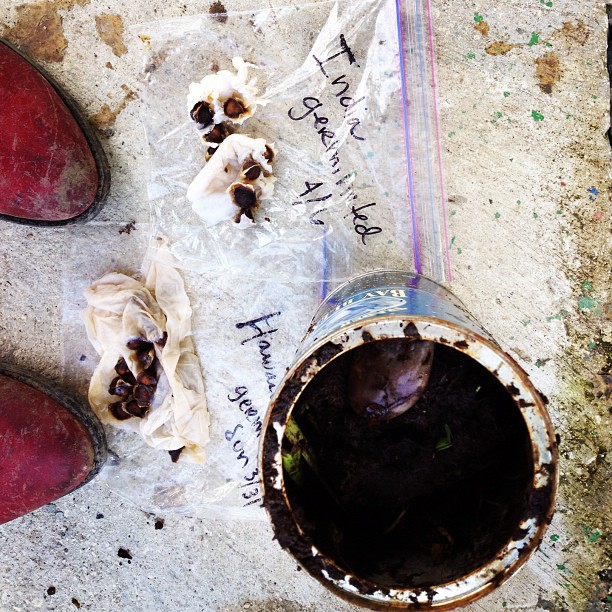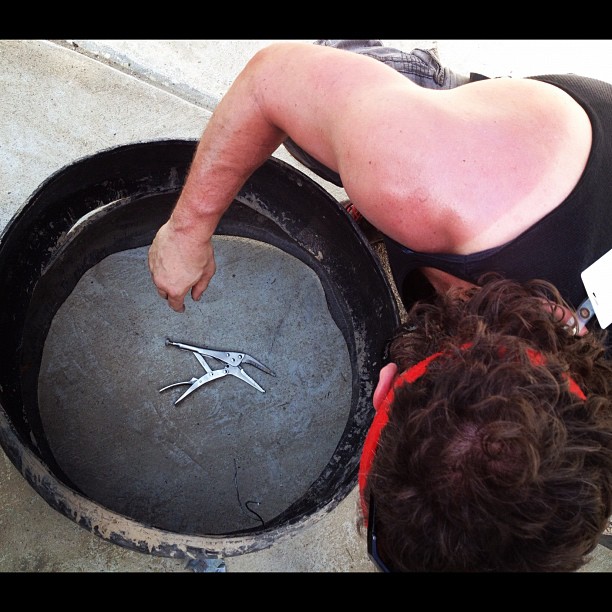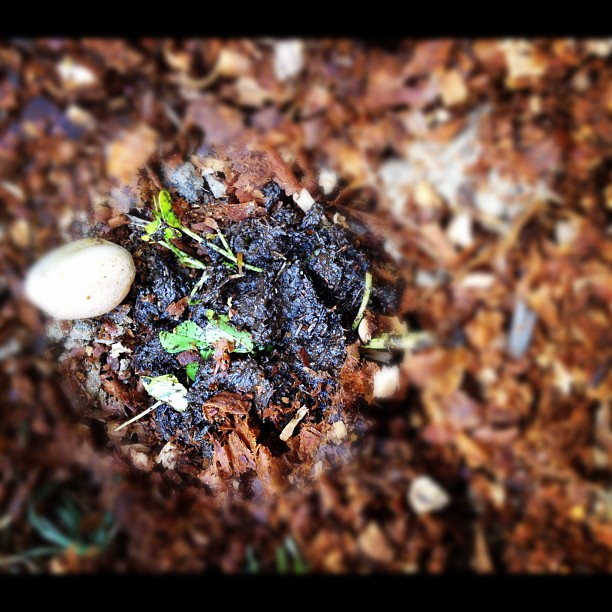
Most waste in Haiti is burned. Think about the toxicity of tires burning on a hot, Haitian day. It was with these noxious fumes in our minds that we set out to rescue the earth’s atmosphere and plant trees in tires instead. During our April 2012 trip to Haiti, we partnered with Rebuild Globally and Haiti Communitere to create Moringa Tree planters and demonstrate the concepts of repurposing, upcycling, composting, growing one’s own food, and the health benefits of protein-dense trees.
The project involved upcycling discarded car tires of various sizes into colorful planters by cutting out their sidewalls and then stacking them three high to form a tall ring planter. Our first few tires can be found at Haiti Communitere and OJFA. Thank you to GoPro for helping us capture the entire process.
Magic Moringa Trees are being planted with great nourishment success in Africa and parts of Asia. They are known in Third World Regenerative Circles as the Miracle Tree. Here at Project HOPE Art we are embarking on a project we like to call the Tree of Life. A tree can draw up the water table through it’s roots and prevent soil erosion. It can use that water to provide food and shade to the community. This is especially important in a country that is 98% deforested.
More About Moringa Trees
Also commonly known as “the horseradish tree,” the leaves from this plant have:
7 times the vitamin C in oranges
4 times the calcium and 2 times the protein in milk
4 times the vitamin A in carrots
3 times the potassium in bananas
The easiest and fastest way to start a moringa tree is from branch cuttings. Even branches used as fence posts often take root and grow into full-sized trees. You can also grow moringa from seed, but this is a little more difficult and takes longer to give you a yielding tree. Try growing from seed if you cannot get branch cuttings. Researchers at the Kenya Forestry Research Institute found growth rates as high as seven metres in the first year from seed, with extremely high fruit yield. The main danger with seedlings is getting too much moisture before they become woody. Moringa branch cuttings will root without much care, but they grow best if you plant them at the start of the rainy season or another time when the weather is mild. Avoid planting cuttings in very hot or cold weather. Choose a healthy, mature tree from which to take your cuttings. If possible, find out which trees bear the largest number of pods and the best-tasting ones. Take cuttings from those trees. It is always better to take cuttings from several different trees rather than just one. This way, if a disease or pest strikes, some of your trees will have a better chance of surviving. Find a straight mature branch with some hard wood. Cut off about one metre from the end of the branch, just below a node. Then cut off the leaves and tender growing end of the branch, cutting just above a node. This is your branch cutting.
SOURCE: Trees for Life International
Learn how to make your own Tire Planter here.

